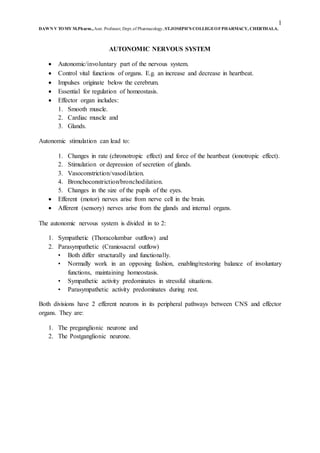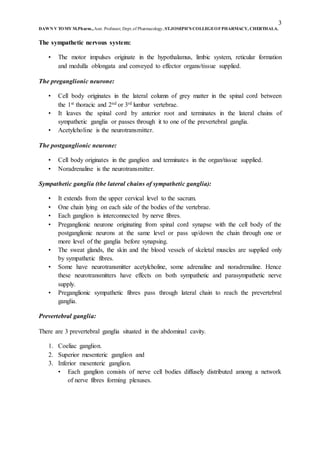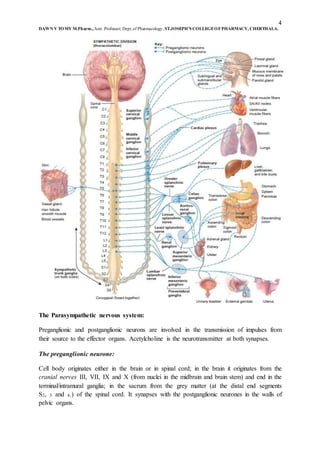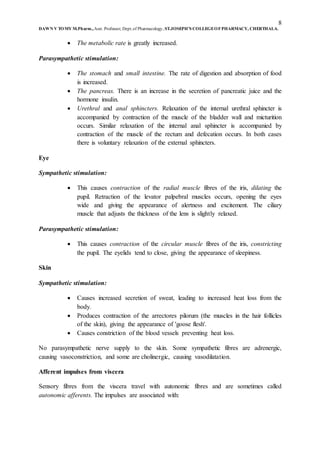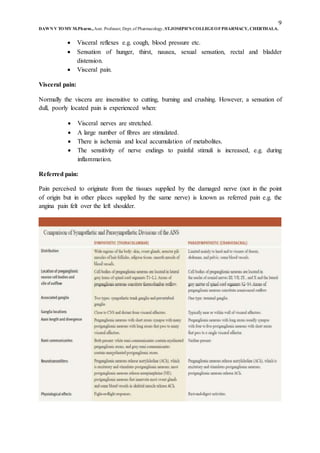The autonomic nervous system controls involuntary body functions and is divided into the sympathetic and parasympathetic nervous systems. The sympathetic system prepares the body for fight or flight through effects like increased heart rate and dilation of blood vessels. The parasympathetic system helps to rest and digest through effects like decreased heart rate and constriction of bronchioles. Both systems work in opposition to maintain homeostasis. Preganglionic neurons originate in the CNS and synapse with postganglionic neurons in autonomic ganglia which connect to effector organs. Acetylcholine and norepinephrine are important neurotransmitters that allow the autonomic nervous system to regulate vital involuntary functions.
